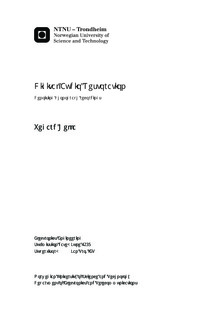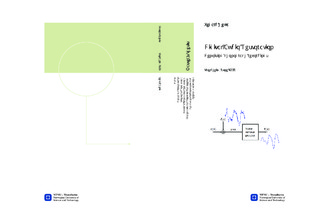| dc.contributor.advisor | Tro, Jan | nb_NO |
| dc.contributor.author | Hella, Vegard | nb_NO |
| dc.date.accessioned | 2014-12-19T13:48:57Z | |
| dc.date.accessioned | 2015-12-22T11:48:47Z | |
| dc.date.available | 2014-12-19T13:48:57Z | |
| dc.date.available | 2015-12-22T11:48:47Z | |
| dc.date.created | 2013-11-21 | nb_NO |
| dc.date.issued | 2013 | nb_NO |
| dc.identifier | 666111 | nb_NO |
| dc.identifier.uri | http://hdl.handle.net/11250/2370904 | |
| dc.description.abstract | This master's thesis realize an audio noise reduction tool by use of digital signal processing. The tool is used to restore phonograph recordings. The recordings are restored on behalf of Ringve Museum, Norway's national museum of music and musical instruments. Sometimes the noise can be louder than the actual audio. In the view of a museum or library institution, this makes them less valuable as they are not presentable to the general public. A common restoration environment will include multiple tools. We will only specialize in one of them reducing broadband, stationary and additive noise. This is often perceived as static hiss or buzz. To realize the tool we use the numerical computation environment MATLAB. In MATLAB the calculations are written using a high-level programming language with many embedded functions. There are several established algorithms specializing in noise reduction of audio and speech. We will look at some basic and some complex algorithms that are based on the Short Time Fourier Transform (STFT). This technique slices the audio in short time frames to be able to analyze the local complex frequency spectrum. The noise reduction procedure compare the audio spectrum with its estimated noise spectrum to calculate an attenuation at each frequency. The attenuated signal is transformed back into time domain. Some of the algorithms are based on the Wiener filter or AR-modeling. The program will include a user interface with selectable algorithms and parameters. In old recordings a certain level of noise may be wanted to preserve authenticity. Thus a noise floor generator will be implemented.Some necessary theory of digital signal processing will be given, but some general knowledge will be required. The noise reduction theory is presented before the realization and program flow is explained. A listening test will be conducted. Audio examples are used to illustrate the general results, and the development process, results and further work is discussed. The program gave better results than one of the commercial available softwares. Another important result is that the stationary property is a poor approximation. The phonograph noise exhibits periodical properties with longer time periods than used in the short time transform. A model incorporating this feature should be implemented. | nb_NO |
| dc.language | eng | nb_NO |
| dc.publisher | Institutt for elektronikk og telekommunikasjon | nb_NO |
| dc.title | Digital Audio Restoration: Denoising phonograph recordings | nb_NO |
| dc.type | Master thesis | nb_NO |
| dc.source.pagenumber | 61 | nb_NO |
| dc.contributor.department | Norges teknisk-naturvitenskapelige universitet, Fakultet for informasjonsteknologi, matematikk og elektroteknikk, Institutt for elektronikk og telekommunikasjon | nb_NO |

